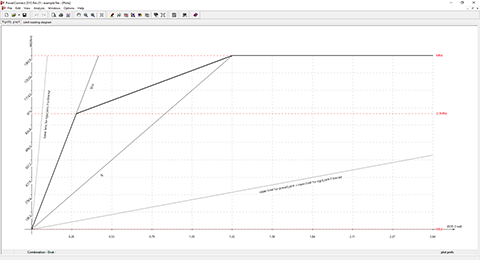In case of a semi-rigid joint, the effects of the behaviour of the joints on the distribution of internal forces and moments within a structure, (and on the overall deformations), should be taken into account. When these effects are sufficiently small they may be neglected, this is the case when you have a pinned or rigid joint.
Whether a joint is pinned, semi-rigid or rigid can be determined by comparing its initial rotational stiffness Sj,ini with the classification boundaries given in Eurocode 1993-1-8 §5.2.2.5.
The effect of the joint behaviour can be represented in a moment-rotation diagram or by a rotational stiffness value.
Possibilities to model the joint’s stiffness
Moment rotation diagram
Eurocode 1993-1-8 §5.1.1 (4) allows you to use any appropriate curve, including a linearised approximation, such as a bi-linear or tri-linear diagram. This last one is used in PowerConnect. If you are working with the Diamonds <> PowerConnect link, this tri-linear diagram is transferred to Diamonds automatically, ready to be used in the global analysis.

Rotational stiffness value Sj or Sj,ini
From Eurocode 1993-1-8 §5.1.2 (3) and (4) we learn that
(3) In the case of a semi rigid joint, the rotational stiffness Sj corresponding to the bending moment Mj,Ed should generally be used in the analysis. If Mj,Ed does not exceed 2/3 Mj,Rd, the initial rotational stiffness Sj,ini may be taken in the global analysis.
(4) As a simplification to (3), the rotational stiffness may be taken as Sj,ini/η for the analysis for all values of Mj,Ed, where η is the stiffness modification coefficient.
This means for the rotational stiffness:
- you should always use Sj
- but if Mj_Ed < 2/3Mj,Rd, you may use Sj,ini

